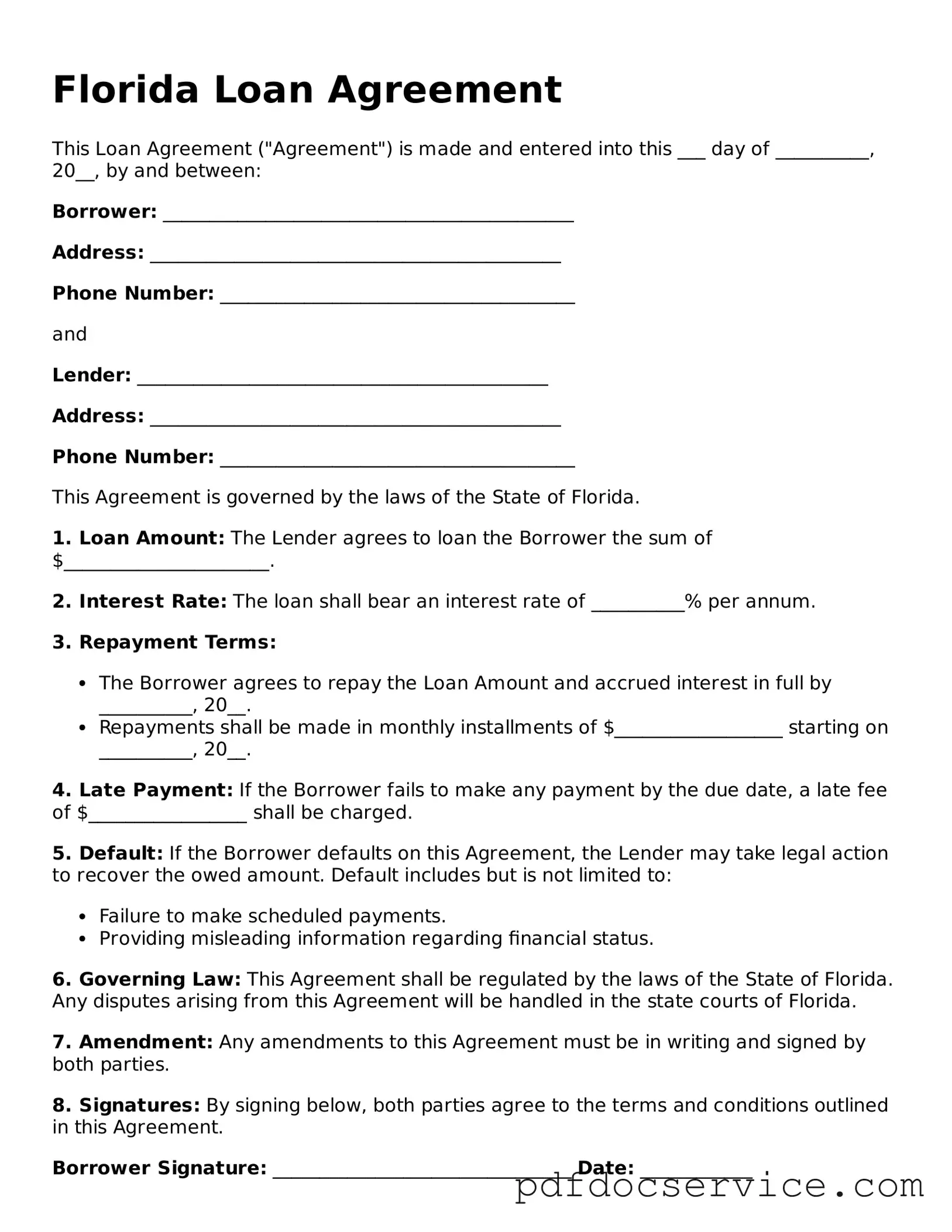What is a Florida Loan Agreement?
A Florida Loan Agreement is a legal document that outlines the terms and conditions of a loan between a lender and a borrower. It specifies the amount borrowed, interest rates, repayment terms, and any collateral involved. This agreement serves to protect both parties by clearly defining their rights and responsibilities.
Who can use a Florida Loan Agreement?
Any individual or business in Florida seeking to lend or borrow money can use this agreement. It is commonly utilized by private lenders, banks, and individuals who want to formalize a loan arrangement. Both parties should ensure they understand the terms before signing.
What are the key components of a Florida Loan Agreement?
A comprehensive Florida Loan Agreement typically includes the following components:
-
Loan Amount:
The total sum being borrowed.
-
Interest Rate:
The percentage charged on the loan amount.
-
Repayment Schedule:
Details on how and when payments will be made.
-
Default Terms:
Conditions under which the borrower may default on the loan.
-
Collateral:
Any assets pledged to secure the loan.
-
Governing Law:
The legal jurisdiction that will apply in case of disputes.
Is it necessary to have a lawyer review the Loan Agreement?
While it is not legally required to have a lawyer review the Loan Agreement, it is highly recommended. A legal professional can ensure that the terms are fair and comply with Florida laws. This review can help prevent misunderstandings and disputes in the future.
What happens if the borrower defaults on the loan?
If the borrower defaults, the lender has several options, which may include:
-
Demanding immediate repayment of the outstanding balance.
-
Taking legal action to recover the owed amount.
-
Seizing any collateral specified in the agreement.
The specific actions available will depend on the terms outlined in the Loan Agreement.
Can a Florida Loan Agreement be modified after it is signed?
Yes, a Florida Loan Agreement can be modified after it is signed, but both parties must agree to the changes. It is advisable to document any modifications in writing and have both parties sign the amended agreement to ensure clarity and enforceability.
Florida Loan Agreement forms can be obtained from various sources, including:
-
Online legal document providers.
-
Local law offices.
-
Business resource centers.
When selecting a form, ensure it is up-to-date and complies with Florida laws.
